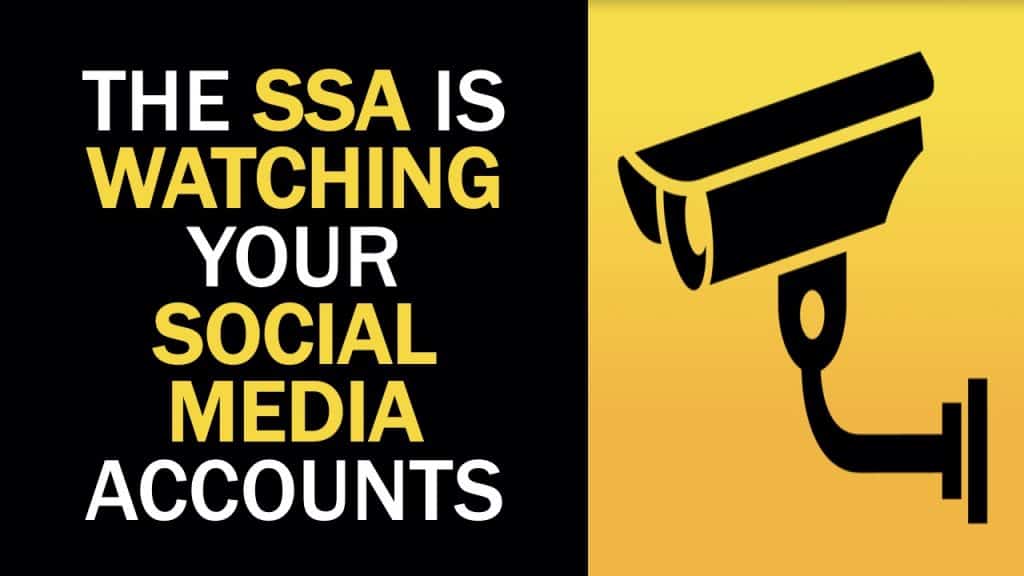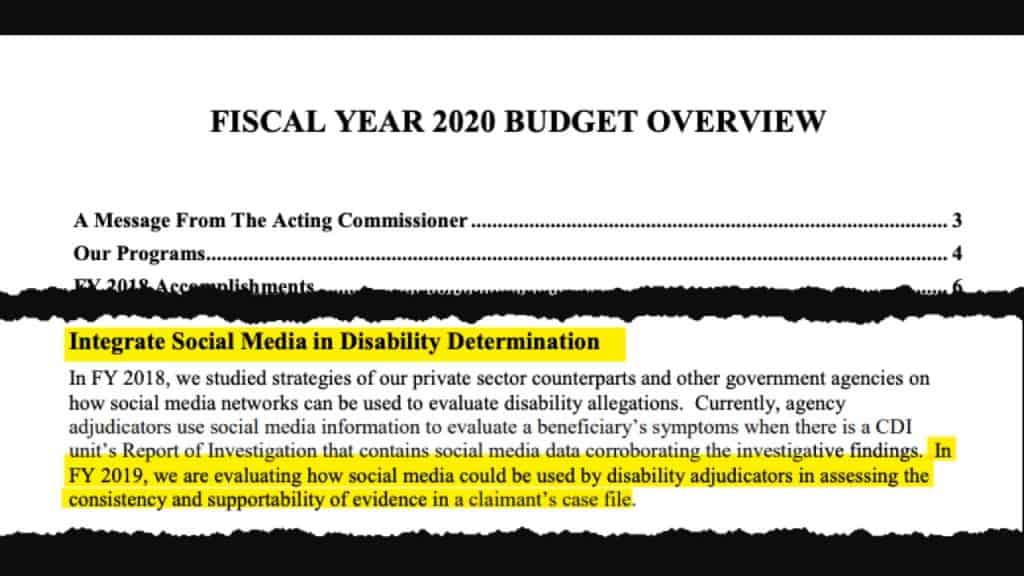
The government really is watching you. Or at least, the Social Security Administration is watching your social media accounts.
It might sound like the plot of a movie, or the latest conspiracy theory about Big Brother out to get you. But it’s true: the Social Security Administration (SSA) wants to increase its monitoring of social media accounts.
This isn’t a future threat. It’s happening now. The SSA already monitors social media posts from individuals who are on disability. The purpose is to help identify and investigate fraudulent disability claims, but what may change is when they begin monitoring.
Why the Social Security Administration May Increase Its Social Media Surveillance
The SSA wants to start using social media activity not just to catch or track potential cases of fraud. They want to use social media content as part of the evaluation of a disability application.
If you file for disability, the Social Security Administration could start checking out your Facebook, Instagram, and other social networking profiles to make sure you aren’t behaving in a manner inconsistent with your disability.
For example, if you file a disability claim for degenerative disc disease, the SSA could potentially check out your social media posts to verify that you aren’t participating in activities that would be inconsistent for someone with chronic back pain.
Here’s what you need to know about this potential ability of the SSA to keep an eye on you online.
With Financial Challenges Ahead for Social Security, Expect Crackdowns
The SSA’s Fiscal Year 2020 Budget Overview addresses the potential for increased social media surveillance. The document includes this line explaining what the administration may roll out in the near future:
“We are evaluating how social media could be used by disability adjudicators in assessing the consistency and supportability of evidence in a claimant’s case file.“

It’s no surprise that the Social Security Administration has turned to this. Since 1970, there has been a 460% increase of individuals on disability. Unfortunately, there’s no doubt that at least some of these cases are fraudulent.
The SSA wants to increase their efforts to identify and prosecute these claimants — especially considering the administration faces huge financial challenges to continue funding the program. With an uncertain future for Social Security in general, this increasing burden on the system only makes things worse.
Frankly, I’m not shocked that the SSA might increasingly mine social media platforms and profiles for proof of fraud — I’m only shocked that it took them this long to consider this approach.
Social Media’s Popularity Means There’s an Abundance of Data for the SSA to See
There are more people using social media accounts than ever before. According to the Pew Research Center, 69% of all adults have at least one social media account. (Just for reference, this was 5% in 2005.)
50% of those who don’t have a social media account live with someone who does and in the same research report it shows that a good percentage of these individuals use the account of the other person to see posts.
And all those people on social networks? They’re sharing content — and personal information and data — like crazy. On average, people upload 350 million photos to Facebook every day. The platform experiences 100 million daily video views and 4 million likes every minute.
The desire to share the details of your daily experience with your interconnected network helped to drive this kind of growth and mass adoption of the platforms. This treasure trove of data is too tempting and valuable for the SSA to continue ignoring as part of their evaluation.
How Will the Social Security Administration Truly Leverage Social Media for Monitoring and Surveillance of Potential Claimants?
Again, I’m not surprised to see the SSA want to take advantage of the ability to look in on the real lives of people requesting benefits from the program to confirm their claims are legitimate. But the problems come in with the application of the policy.
How would this work? As users of social media, we understand that each photo or video has to be taken in context (and with a grain of salt). We all know that social media serves as a highlight reel of our lives and doesn’t always portray reality very accurately.
In other words, we’ve all posted content meant to paint us in a good light or to make our lives look just grand all the time (even though 5 minutes before you posted a happy picture of you and your spouse you had a screaming match in the living room).
We all do this, and on some level, we all know other people do it too. As users of social media, we understand that what we see on the platforms isn’t 100% representative of our 24/7 daily lives.
But what happens when that personal connection is lost? What happens when there’s no context to the photos and your content is taken at face value with no other information taken into account? Will the SSA understand the context around a photo enough to make a decision about whether you are really disabled?
For example, the leading cause of disability payments are made due to “musculoskeletal and connective tissue” disorders. That seems easy enough to evaluate through images and videos.
After all, if an individual files a claim for disability on the basis of chronic Fibromyalgia but posts a current video of them winning their age group in a marathon, that seems like a no-brainer. Maybe they shouldn’t be on disability.
But again, given the tendency to present our best self to our network on social media, we tend to only post the photos showing us happy and healthy.
Imagine you live with daily chronic back pain, but have a rare day of low pain. Do you think you might be more likely to post photos of yourself and your activities from that particular day than the next few days where confinement to a bed is a real possibility?
You might share those rare, fleeting moments not only because you’re likely happier on that one day you experienced unusually low pain, but also because you may have enjoyed doing something you’re rarely in any physical condition to do, like hike a favorite trail.
At around 26%, the second leading reason for disability payments are from “all other mental disorders.” How will the SSA use a social media account to evaluate those claims? Does a picture really show what’s going on inside the mind?
I think the investigation of potential fraud is important, but it needs to be done correctly. The Social Security Administration should understand that life on social media is generally not an accurate recording of someone’s real circumstances.
Regardless of what the Social Security Administration begins doing with social media monitoring, all of us should use this as a reminder that what we say and post online matters and could have consequences.
As this and other policies develop, I’ll be here to give you the details.
Questions?
If you still have questions, you could leave a comment below, but what may be an even greater help is to join my FREE Facebook members group. It’s very active and has some really smart people who love to answer any questions you may have about Social Security. From time to time I’ll even drop in to add my thoughts, too. Also…if you haven’t already, you should join the 100,000+ subscribers on my YouTube channel!
One last thing, be sure to get your FREE copy of my Social Security Cheat Sheet. This is where I took the most important rules and things to know from the 100,000 page Social Security website and condensed it down to just ONE PAGE! Get your FREE copy here.
